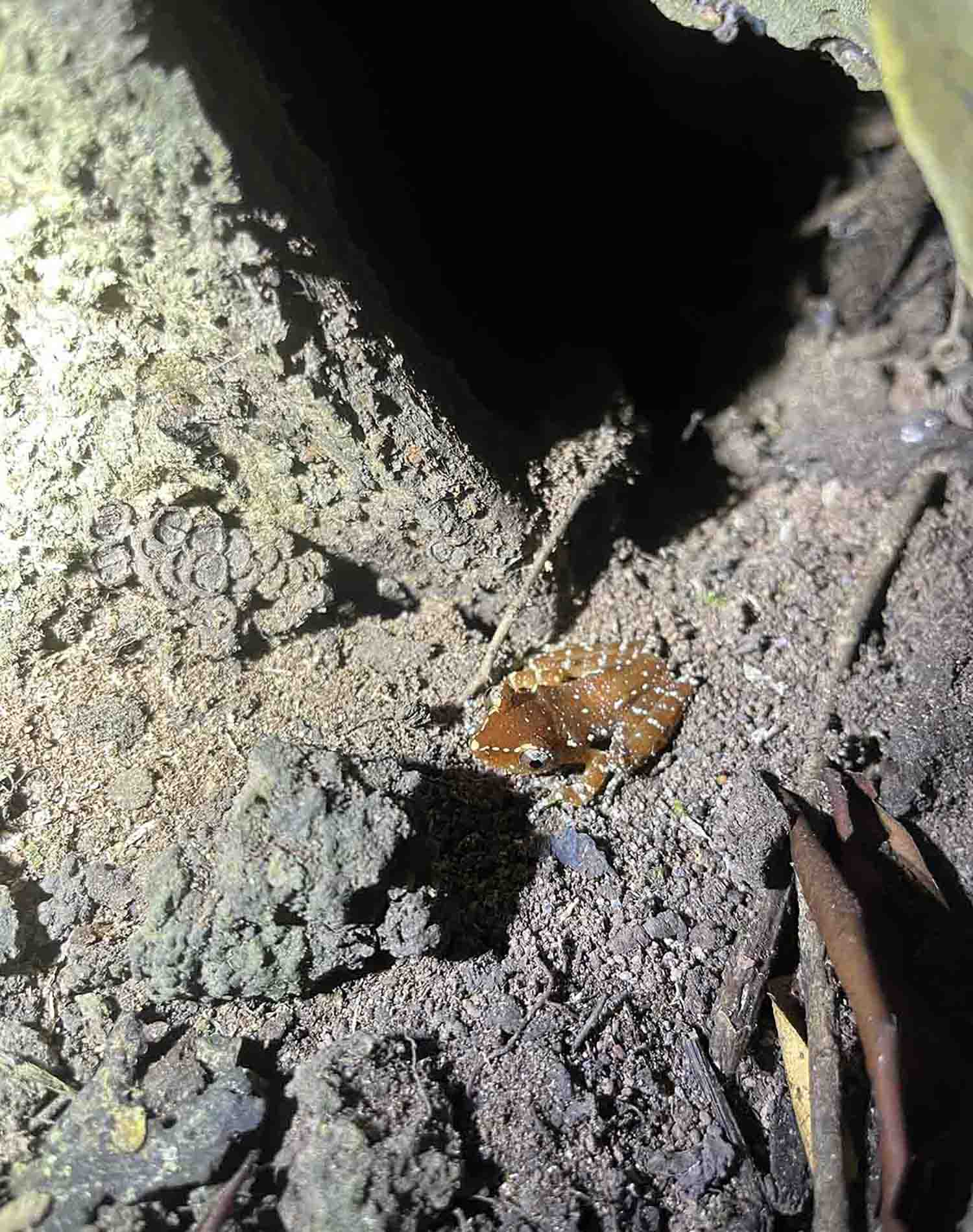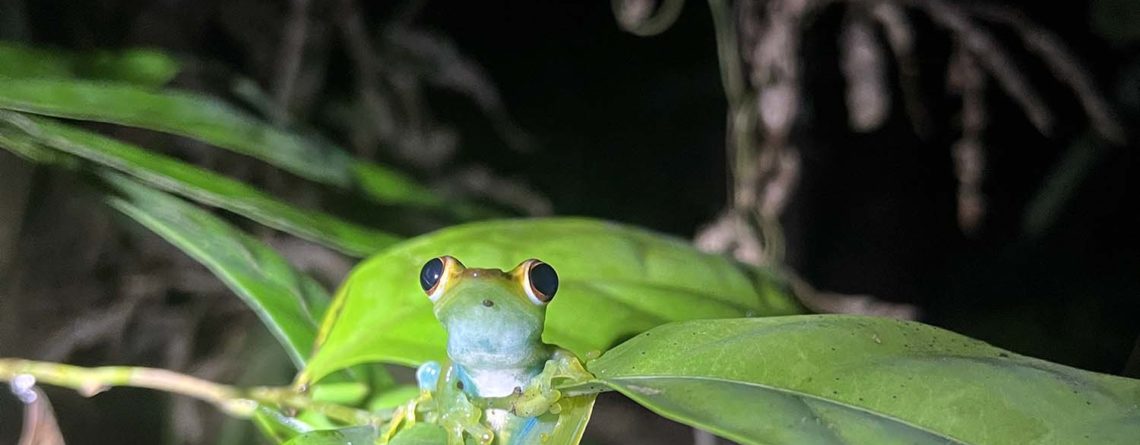PTY Feature: Hannah’s Project
By Hannah Shapland from Cardiff University, currently doing her Professional Training Year (PTY) placement at Danau Girang Field Centre (DGFC).
The Lower Kinabatangan Wildlife Sanctuary (LKWS) is a 270km2 sanctuary comprising 10 forest lots of varying degrees of historical disturbance predominantly dominated by oil palm plantations. Despite extensive forest fragmentation and degradation, the LKWS supports an incredibly high amount of biodiversity and is, therefore, the ideal natural laboratory to evaluate the impacts of habitat fragmentation on wildlife populations.
I have always had an interest in herpetology (the study of reptiles and amphibians) as these groups show incredible diversity from physiology to behavioural habits. For my study, I have decided to focus on frogs. They are excellent ecological indicators because they are sensitive to climatic fluctuations and therefore reveal the effects of even small changes to a habitat. The wide variety of frogs in the Kinabatangan also makes them a good group to study as they utilise many different ecological niches. For example, reproduction is achieved in a multitude of ways, with some frogs, like the jade tree frogs, forming foam nests on leaves overhanging water while others, like the rough guardian frogs, transport their tadpoles on their backs to water sources. From litter-dwelling frog species to those high up in the canopy, frog species have different habitat requirements and it’s important we preserve those habitats which support the highest biodiversity.


This is what led me onto my project as I am comparing different ways to sample frog species. Active surveys, which involves walking transects and identifying species along them, is the traditional and standard method which is being used in DGFC for projects such as Regrow Borneo. A second but much newer technique (which is now being deployed) are acoustic recorders called AudioMoths, which record frog calls from which species can be identified.
The aim of my project is to compare both these techniques to see whether the AudioMoths can detect the same species composition as the active surveys; this can lead to ongoing frog monitoring that requires fewer staff and volunteers in the field and therefore larger standardised data sets can be acquired because the presence or absence of species at sites would be known with less sampling effort.
As a still relatively new technology, the accuracy of acoustic monitoring needs to be investigated before widespread deployment. But, acquiring larger data sets of frog calls and the development of sophisticated programmes for their analyses is important because this could uncover new findings such as climatic conditions and patterns in breeding seasons or even the calls of new and previously unidentified species.

